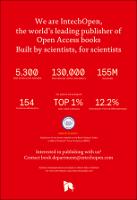Chapter Metallic nanowire percolating networks: from main properties to applications
Author(s)
Duy Nguyen, Ngoc
Jiménez, Carmen
Resende, Joao
Muñoz-Rojas, David
Bellet, Daniel
Papanastasiou, Dorina T.
Huong Nguyen, Viet
Language
EnglishAbstract
There has been lately a growing interest into flexible, efficient and low-cost transparent electrodes which can be integrated for many applications. This includes several applications related to energy technologies (photovoltaics, lighting, supercapacitor, electrochromism, etc.) or displays (touch screens, transparent heaters, etc.) as well as Internet of Things (IoT) linked with renewable energy and autonomous devices. This associated industrial demand for low-cost and flexible industrial devices is rapidly increasing, creating a need for a new generation of transparent electrodes (TEs). Indium tin oxide has so far dominated the field of TE, but indium’s scarcity and brittleness have prompted a search into alternatives. Metallic nanowire (MNW) networks appear to be one of the most promising emerging TEs. Randomly deposited MNW networks, for instance, can present sheet resistance values below 10 Ω/sq., optical transparency of 90% and high mechanical stability under bending tests. AgNW or CuNW networks are destined to address a large variety of emerging applications. The main properties of MNW networks, their stability and their integration in energy devices are discussed in this contribution.
Keywords
transparent electrode, silver nanowire, copper nanowire, transparent conductive material, stability, percolating networkDOI
10.5772/intechopen.89281Publisher
InTechOpenPublisher website
https://www.intechopen.com/Publication date and place
2019Classification
Nanotechnology


 Download
Download